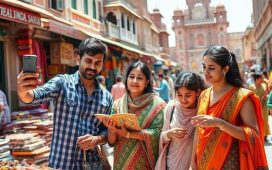The concept of Divine Mother as the focal point of human worship is found way back in the Harappan civilisation. Literary record of the same is traceable right from the Rig Veda where we find the wonderful hymn, Devishuktam. Here, the goddess declares that she is the supreme power behind all creation. The Kenopanishad refers to her as Uma Haimavati. In Tantra cult, the goddess acquires different dimension in the form of 10 great wisdom forms, as Dasa Mahavidya. In Devi Mahatmyam, in Markandeya Purana, venerating the Mother Goddess acquired even more importance.
Devi Durga, literally meaning the deity protecting devotees as ‘durga’, fortress, is invoked as the creating, nurturing, protecting, loving and, above all, liberating deity of the devotees. Apart from looking after us during our earthly abode, she ultimately delivers us from the darkness of delusion by cutting our sense bondage with 10 weapons in her 10 hands, leading to final dissolution of the indomitable ego by making it realise the supremacy of the cosmic life force behind creation.











